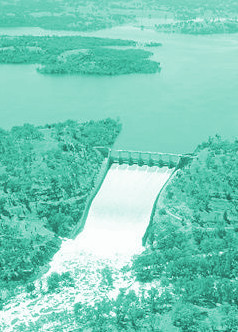Councils seek water fix
 Councils are calling for an urgent upgrade of water storage infrastructure in NSW.
Councils are calling for an urgent upgrade of water storage infrastructure in NSW.
Dam levels are at near-record lows and water restrictions are now in force in many regional and metro areas.
Warragamba Dam, which is responsible for much of Greater Sydney’s water, is at 53 per cent capacity.
But things are worse in the regions, where Burrendong Dam in the central west is at 5.7 per cent and Keepit Dam near Tamworth is down to just 0.9 per cent capacity.
“We have one of the most unprecedented droughts in the state's history and this water supply issue is hitting both urban and regional areas hard,” said Linda Scott, president of Local Government NSW.
“There are record low inflows and people are crying out for help.
“Councils need more help from State and Federal Government to secure water supplies.”
Deputy Prime Minister Michael McCormack is among a growing group pushing for new dams to be constructed.
“Sometimes it's difficult working with states, so the National Water Grid Commission has been established to take the politics out of it,” Mr McCormack said.
“We want to put the science and stakeholders first, including the states and territories, to get dams built.”
Despite numerous reports and inquiries, no new dams have been built in western NSW since 1987.
While states are being encouraged to work together to secure water supplies, local governments recently met on the New South Wales-Queensland border to lead the talks.
The meeting heard of an idea to build a dam on the Maryland River in the upper Clarence catchment, and pipe the water to the Condamine River.
“It's a potential long-term solution,” said Toowoomba Mayor, Paul Antonio, after the meeting.
“We're looking for a regional solution to a national issue.
“This would not come to pass for some years, and I think by working together across northern New South Wales and southern Queensland we probably could help each other.”
Tenterfield Shire Councillor Gary Verri said something needs to be done.
“The Maryland is a dry river, it has a sandy bottom, and the yield from that dam is only 21,000 megalitres, as opposed to 4.9 million megalitres that flows out of the mouth of the Clarence,” he said.
“It's a little bit more than nothing what we would take out of the river system.
“It's a good fix because it really helps the whole system come through.”








 Print
Print